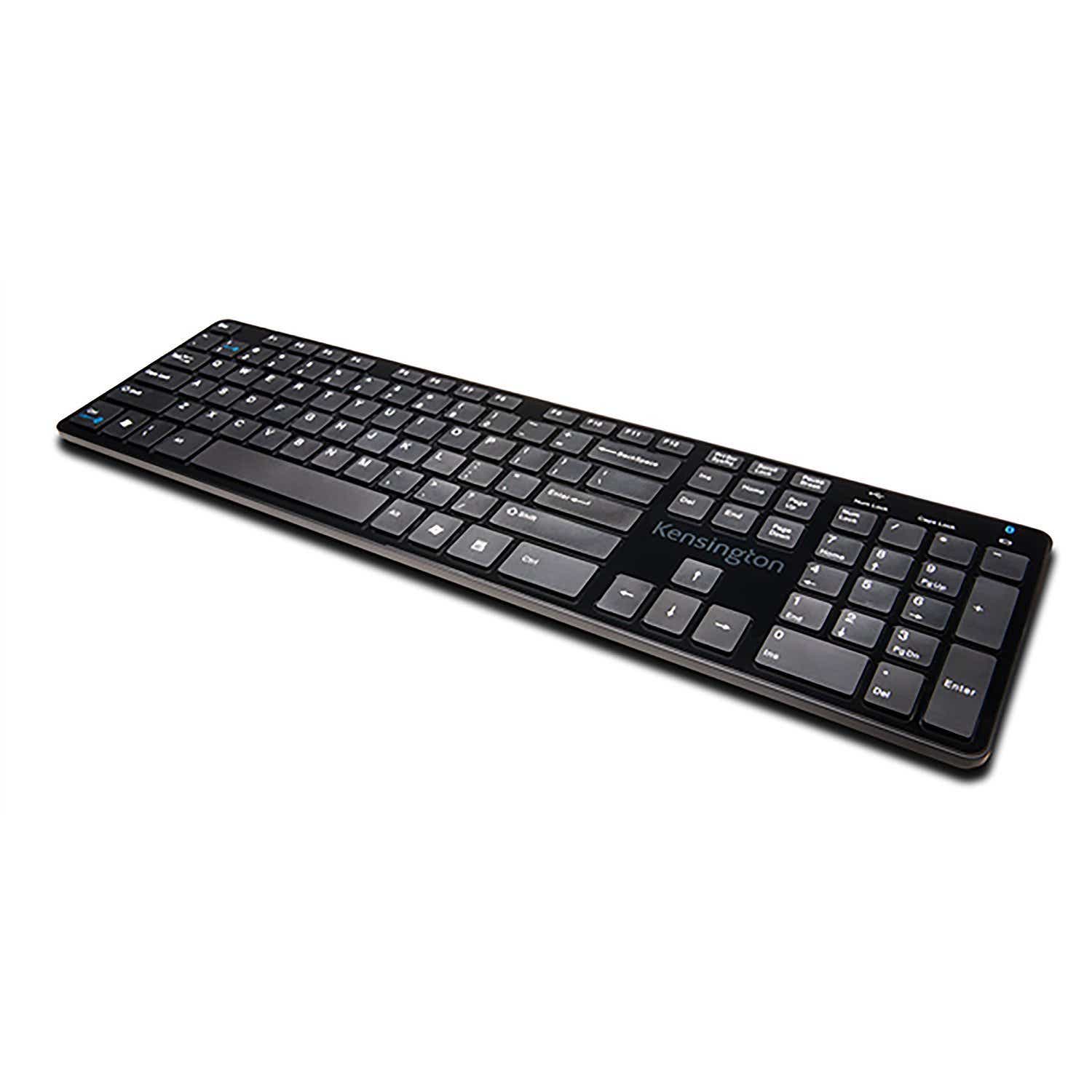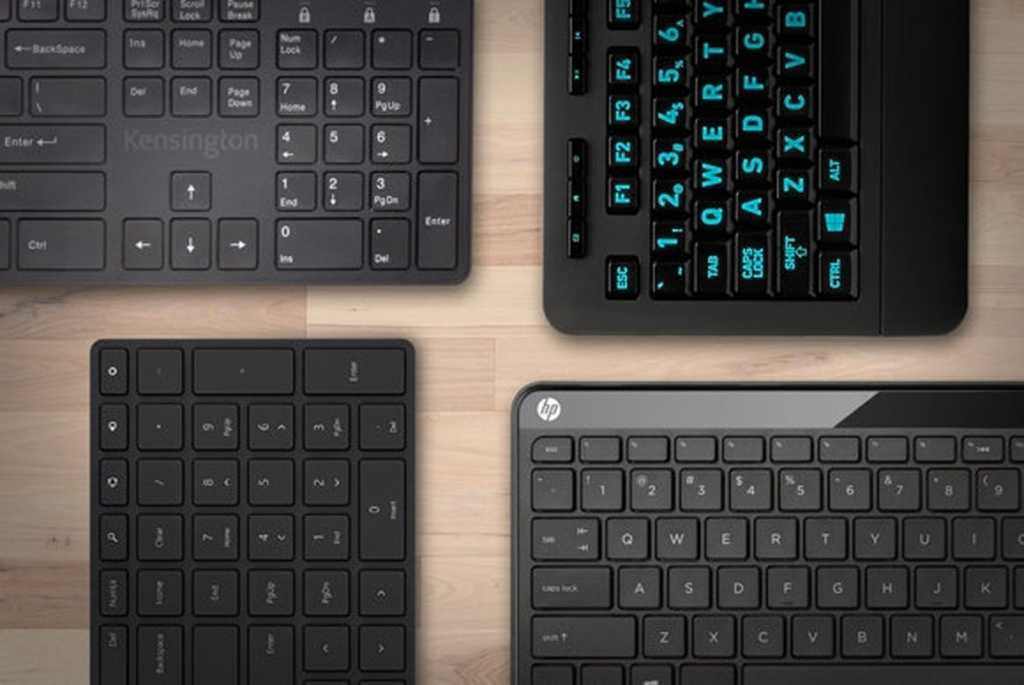The best wireless keyboards do more than free you from a cable. They let you toss the crummy keyboard you got for free with your PC—does anyone like that one?—and they also give you options. The models we’ve reviewed range from full-size desktop slabs to portable models that skip easily from laptop to tablet to phone. Whatever you need to type with, there’s a keyboard for it.
Keyboard choice can be very subjective. That said, we’ve based our reviews on hours spent with each model, banging away on work projects, surfing the web, and keeping up on social media.
There’s truly no one size to fit all, but our reviews aim to give you enough specifics to make a sound decision. Check out our buying advice at the end to help you choose from other models you find.
For more tetherless convenience, see our roundup of the best wireless mice.
Updated 10/22/21 to include our review of the Razer BlackWidow V3 Pro, a premium option for gamers that offers wireless flexibility, high-quality switches, and a ton of extras that make it well worth consideration, even at a high price. Scroll to the bottom of this article to see links to all our wireless keyboard reviews.
Best overall wireless desktop keyboard
Logitech’s K800 Wireless Illuminated Keyboard is indispensable if you often type late into the evening or otherwise work in dark environments. This backlit keyboard not only provides the necessary light but also offers one of the most comfortable and pleasant typing experiences we’ve encountered, all at an affordable price.
Best budget wireless keyboard
Dedicated typists looking for a premium, snappy keyboard without going the mechanical route should give Logitech’s MK540 Advanced combo a serious look. For a very reasonable price you get a roomy keyboard with dedicated media buttons, programmable keys, and tactile typing. The mouse is no slouch, either
Runner-up budget wireless keyboard
The Macally Full Size Wireless RF Keyboard makes a great no-frills keyboard replacement for your desktop or laptop. It’s got a roomy layout, simple wireless setup, and responsive keys—in other words, it covers all the basics with aplomb, at a price that can’t be beat.
Best Bluetooth keyboard
As its name clearly states, Logitech’s K780 Multi-Device Wireless Keyboard promises to be the one keyboard to rule all your computing gizmos. Indeed, it’s fully compatible with Windows, Mac OS, Chrome OS, Android, and iOS—and more importantly, it provides fast and effortless switching between your computer, smartphone, and tablet.
Best ergonomic wireless keyboard
Logitech’s Ergo K860 has finally conquered reviewer Michael Ansaldo’s skepticism about awkward ergonomic keyboards. In the few weeks he used the K860, he noticed increased typing comfort and reduced muscle tension, all without sacrificing productivity to a steep learning curve. “It showed me that just because my usual typing posture doesn’t cause pain, it doesn’t mean it can’t be improved,” he claimed. It’s a little expensive compared to a conventional model, but it’s the only ergonomic keyboard we’d heartily recommend.
Best wireless gaming keyboard
Corsair’s K63 wireless gaming keyboard is compact, durable, and reasonably comfortable to type on. It’s only the second wireless mechanical keyboard from a major manufacturer. It’s also the first with backlighting, though its single, bright-blue color may come to annoy you as time goes on. Still, whether you’re in for casual couch gaming or just want a cleaner, wire-free desktop, the K63 is a solid choice.
Coolest-looking wireless keyboard
The Azio Retro BT Classic is a vintage-style mechanical keyboard priced like a real antique, but if you have the cash, it’s certainly striking. From its deep, clicky keystrokes and wood or leather paneling to its LED-backlit keys and rechargeable battery, the Bluetooth-enabled Retro Classic will delight serious typists with old souls and money to burn.
Wireless keyboards: Bluetooth vs. USB
Wireless keyboards connect to a PC in one of two ways: via Bluetooth or a USB receiver. Some older Windows 7 machines may not support Bluetooth. On the other hand, if you need a keyboard to work across different platforms on newer devices, a Bluetooth-enabled model is what you need.
All the USB receiver-driven models in this roundup were flawless examples of plug-and-play keyboards. Pairing Bluetooth keyboards (compared to Bluetooth headsets, let’s say) requires a few more steps, and only one of the models was slightly flaky in maintaining its connection.
Bluetooth keyboards tend to cost a little more but also offer longer battery life. As you’re shopping (particularly if you have big fingers), keep in mind that some hardware makers sacrifice the keys’ size and spacing to give you portability.
How we test wireless keyboards
It was hands-on all the way with our keyboard testing. We spent at least one full workday typing exclusively on each model we tested, with follow-up time to allow for a learning curve. We assessed the primary typing experience: key design, typing feel, and even noisiness. We also tried the secondary features: hotkeys, switches and dials on multi-platform models, and even the ability to adjust the angle or other comfort characteristics.
We considered the size, weight, and durability of each model against its purpose—whether it was designed to be portable or desk-bound, and compact or fully featured. For instance, we balance the versatility of multi-platform models like Logitech’s K780 against its performance as an actual keyboard you need to use every day (and in this case, it wins on all counts).
How to shop for a wireless keyboard
You’re going to use this keyboard every day, so make sure it fits your typing habits and your needs. Here’s what to keep in mind as you shop.
Size: A model that will always sit on your desktop can be bigger and heavier, and usually some other advantages some with that. As more of us carry laptops or tablets, however, we’ll look for models that are compact or portable. These will sacrifice some features but be easier to take with you.
Keys: Look for keys that are sculpted and spaced for typing comfort. This is why we encourage trying before buying: We’ve had very different experiences with traditional keys vs. chiclet-style vs. flatter key designs, and it’s surprising how little things like the texture or the amount of dimple will make or break a choice. Most mainstream keyboards use membrane technology, which is adequate for most users, but heavy-duty users and gamers will likely prefer keyboards with mechanical switches (which are not reviewed here). Windows hotkeys, or even programmable keys, are great bonuses, especially for power users.
Adjustability: Some keyboards offer no adjustment for angle or height. Look for models with adjustable legs or feet. We haven’t included ergonomic models in this round of reviews.
Battery needs: All wireless keyboards use batteries. Check closely for the type and number of batteries you need, and whether a starter set is included. We note the vendors’ specified battery life in each review.
Price: When it’s so easy to get a keyboard for free, it can be hard to justify actually buying one. The good news is, you can get a solid model for as little as $40, including some of the ones we’ve reviewed. We show the MSRP for each model, but of course you can often find it for less at online or brick-and-mortar stores.
All our wireless keyboard reviews
Keyboards are a very personal choice. Whether you want big or small, desktop or portable, with more or fewer buttons and adjustments, you can find it in one of our other keyboard reviews, listed below.
K380 Multi-Device Bluetooth Keyboard
Designer Bluetooth Desktop
KP400 Switchable Keyboard

Michael Ansaldo is veteran consumer and small-business technology journalist. He contributes regularly to TechHive and PCWorld.

